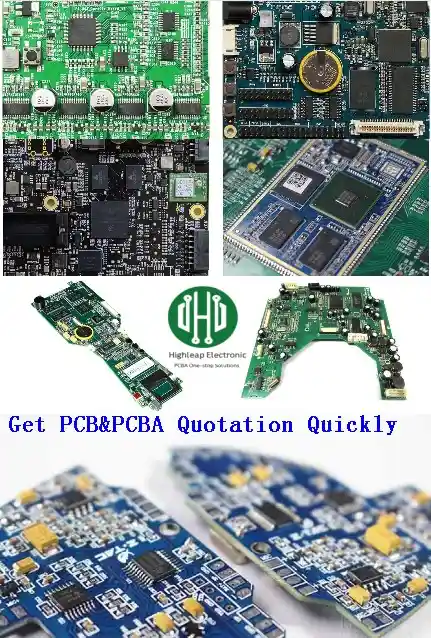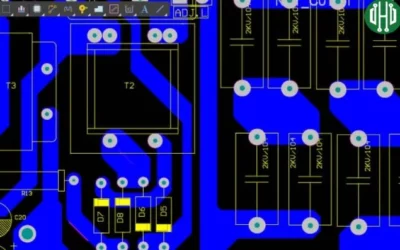Back to blog
High Volume Turnkey PCB Assembly Services

PCB assembly services
Printed Circuit Board Assembly (PCBA) is a critical process in electronics manufacturing, where various electronic components are soldered onto a PCB to create a functional electronic device. This comprehensive guide explores the PCB assembly process, technologies involved, and best practices to ensure high-quality PCB assemblies.
Introduction to PCB Assembly
PCB assembly involves mounting electronic components onto a PCB to create a functional circuit. The components can be surface mount (SMT), through-hole, or a combination of both. The assembly process can be manual, automated, or a combination of both, depending on the complexity and volume of the PCBs being produced.Highleap Electronic offers turnkey PCB assembly services, including BGA assembly, rigid-flex PCB assembly, low-volume, and large batch PCB assembly.
PCB Assembly Technologies
Surface Mount Technology (SMT)
SMT is the most widely used technology in PCB assembly. It involves mounting components directly onto the surface of the PCB. SMT components are smaller, lighter, and offer better electrical performance compared to through-hole components. The SMT process includes solder paste application, component placement using pick-and-place machines, and reflow soldering.
Automated PCB assembly, particularly surface mount technology (SMT), has revolutionized electronics manufacturing. This video showcases the precision and efficiency of modern SMT machines as they accurately place and solder components onto a PCB.
Through-Hole Technology (THT)
THT involves mounting components with wire leads into holes drilled in the PCB. This technology is suitable for components that require stronger mechanical bonds or higher power handling capabilities. The THT process includes component insertion, wave soldering, and manual soldering for components that cannot withstand the high temperatures of wave soldering.
The video showcases the rapid insertion of components into the PCB, significantly enhancing the speed and quality of PCB assembly services.
Mixed Technology Assembly Process
- Single-Side Mixed: Involves a combination of SMT and THT components on a single side of the PCB.
- Blend of SMT and THT: Requires procedures like surface mount adhesive, SMD parts placement, flipping, solidification, wave soldering, and through-hole component placement.
- Double-Side Mixed: Involves processing the PCB on both sides, with or without adhesive, and using a combination of SMT and THT components.
Mixed technology PCB assembly involves using both SMT and THT components on the same board. This approach allows for a combination of components that best suit the requirements of the circuit design.
PCB Assembly Process Steps
- Component Procurement: Procure all necessary components, either through turnkey, biased turnkey, or kitted/consigned methods.
- Stencil Printing: Apply solder paste to the PCB using a stencil, ensuring precise alignment.
- Component Placement: Use pick-and-place machines to accurately place SMT components on the PCB.
- Reflow Soldering: Heat the PCB in a reflow oven to melt the solder paste, creating solder joints between the components and the PCB.
- Through-Hole Component Insertion: Insert THT components into the pre-drilled holes on the PCB.
- Wave Soldering: Pass the PCB over a wave of molten solder to solder the through-hole components.
- Inspection: Use automated optical inspection (AOI) and visual inspection to check for defects and ensure quality.
- Testing: Perform functional testing to verify the PCB’s functionality and performance.
- Packaging and Shipping: Package the PCBs for shipment to customers.
PCB Assembly Quality Assurance
Quality assurance is crucial in PCB assembly to ensure that the final product meets the required standards. Key aspects of QA include process control, component verification, testing and inspection, and documentation. Process control involves monitoring and controlling the assembly process to prevent defects. Component verification ensures that the correct components are used and are of high quality. Testing and inspection are conducted to identify and rectify defects, and detailed documentation is maintained of the assembly process and test results.
Watch our PCB functional test video showcasing our rigorous electrical testing process to ensure the quality and reliability of each PCB. Our testing procedures include continuity testing, functional testing, and performance testing, ensuring that every circuit board meets high standards.
Why Choose Us for Your PCB Assembly Needs?
Extensive Experience: With over 15 years of experience in the industry, we have a proven track record of delivering high-quality PCB assembly services.
Rigorous Testing and Inspection: All PCB assemblies undergo thorough testing and inspection processes, including ICT, X-ray, functional testing, and AOI, ensuring the highest quality standards.
Cost-Effective Mass Production: Our in-house testing capabilities enable us to offer cost-effective mass production of PCB assemblies without compromising on quality.
Flexible Lead Times: For standard projects, our lead times range from 1 to 5 days, while for complex projects, it varies from 1 to 2 weeks. We also accommodate urgent orders to meet our clients’ needs.
Industry-Specific Understanding: We understand that PCB assembly requirements vary across different industries, whether it’s for electronics, medical devices, telecommunications, or other sectors. Our expertise allows us to tailor our services to meet the unique needs of each industry.
Versatile Project Handling: Whether you require low-volume prototypes or high-volume production runs exceeding 10,000 pieces, we have the capabilities to handle all types of projects.
Commitment to Excellence: Our commitment to excellence and customer satisfaction is evident in every project we undertake. We strive to deliver reliable, high-quality PCB assemblies that meet or exceed our clients’ expectations.
Comprehensive Range of Services: From PCB design and prototyping to assembly and testing, we offer a comprehensive range of services to meet all your PCB assembly needs.
Reliable Partner: As your trusted partner in PCB assembly, we are dedicated to providing innovative solutions, exceptional quality, and outstanding customer service.
Future-Ready Solutions: We are constantly innovating and staying abreast of the latest industry trends to ensure that our PCB assemblies are future-ready and meet the evolving needs of the electronics industry.
Conclusion
PCB assembly is a complex process that requires careful planning, precise execution, and thorough quality control. By understanding the various technologies and processes involved, manufacturers can produce high-quality PCB assemblies that meet the demands of modern electronics.
Related Articles
What is the difference between SMD and SMT?
The integration of SMD and SMT in PCB assembly represents a synergistic evolution in electronics manufacturing, focusing on efficiency, cost-effectiveness, and enhancing circuit performance.
Flexible PCB Cost Optimization Strategy
Highleap Electronic provides low-priced, high-quality flexible PCBs and rigid-flex PCBs to the world to help all electronic projects.
Enhance Your PCBA Project:Comprehensive Guide to DIP Package
This section covers the various types of DIP packages, focusing on their materials, configurations, and suitability for different electronic components and applications.




